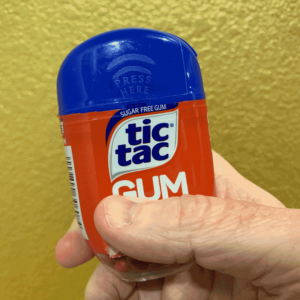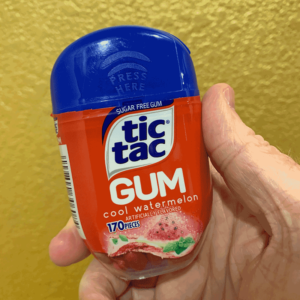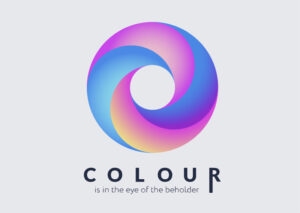by Lourn Eidal \\
 Quick—what flavor gum do you think this is?
Quick—what flavor gum do you think this is?
Seems simple, right? Experience would tell us this is cinnamon flavored gum. We have become accustomed to the package showing us the colors we expect to be associated with certain flavors: green is usually spearmint, blue is peppermint, orange is, well, orange or something fruity. Cinnamon is a spicy red color.
 This is what the actual flavor is—watermelon. Watermelon? I would expect watermelon to display a more pink- or magenta-colored label. This disappointing switcharoo actually happened to my friend a couple of weeks ago. She wanted to buy cinnamon flavored gum, saw the selection on the shelf, and grabbed the package that visually communicated “cinnamon.” She didn’t realize what she had until she chewed it. She was surprised, to be sure.
This is what the actual flavor is—watermelon. Watermelon? I would expect watermelon to display a more pink- or magenta-colored label. This disappointing switcharoo actually happened to my friend a couple of weeks ago. She wanted to buy cinnamon flavored gum, saw the selection on the shelf, and grabbed the package that visually communicated “cinnamon.” She didn’t realize what she had until she chewed it. She was surprised, to be sure.
This demonstrates the power that color has in our everyday lives. This is especially true with non-durable consumer goods, like foods, snacks, OTC medications, and other retail products. I regulary purchase allergy medication, and I have forgotten what the brand name of it is. I just remember that I reach for a green label. You probably can think of other examples of this, whether you are shopping for milk, sliced meat, or your favorite coffee.
Color can afffect us psychologically, as we discussed in our recent marketing video. Use of colors or combinations of colors can impact how we think and behave. It can help communicate by leading our eye to important data. And as we’ve shown here, it helps us retain information and memories through associations with emotions—either subtle or intense.

Here is a simple change to the same label that avoids confusion and keeps the customer happy and making future purchases.
Please contact us with your questions about application of color to your branding, web site, marketing collateral and more. We look forward to helping you.



